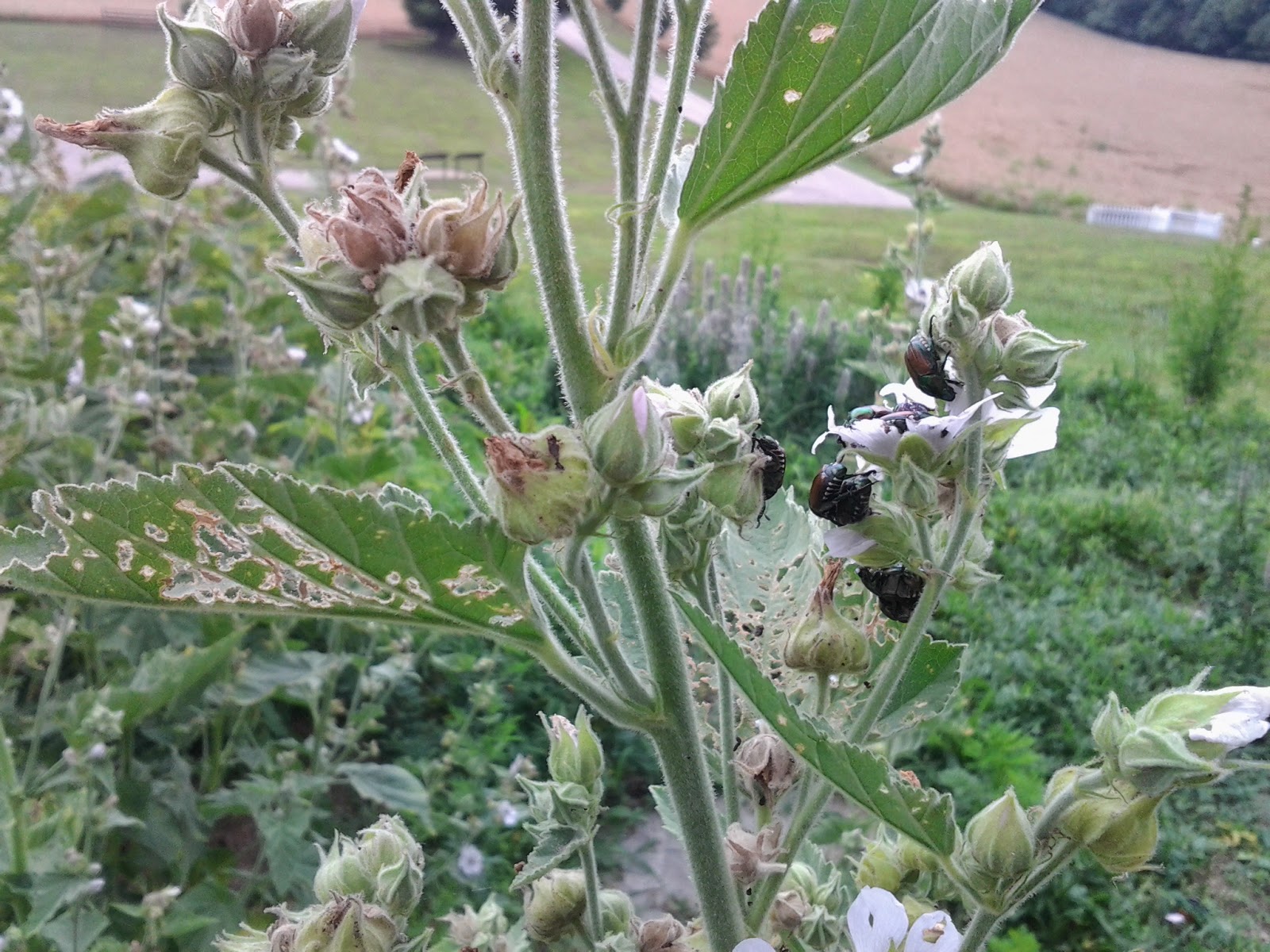As I said last week, the weeds in the Pry Garden have really exploded lately and I have been working hard to cut them back and keep them at bay. I have to thank Karen Dammann, the wife of the Chairman of our Board of Directors, for spending many hours weeding over the past weekend. Much is left to do, but it is really starting to look pretty again, thanks in large part to Karen's work!
I wrote before that many of the plants that we usually consider common weeds were important medicinal plants in the Civil War Era. When most people find them in their garden they pull them out, but I begin to nurture and cultivate them instead.

Dandelions are such a common yard weed and everyone is so familiar with them that I don't waste any space with them in the garden. Nevertheless, they were used as medicine during the Civil War, both on the home front and in Confederate armies. It was principally used as a diuretic (promoting urination) and also as a mild laxative and a tonic to improve digestion. Modern herbal medicine still uses dandelion root and leaves in each of these capacities, especially as a diuretic. Victorians also used dandelion to treat an array of liver, kidney, and bladder conditions, though its efficacy is dubious. The Confederate Medical Department paid citizens by the pound for collected and dried dandelion root.

Another weed that is sometimes used as a medicine is Common or Great Mullein. It has been used as a medicine since ancient times in Europe, from where the plant originates. Mullein's chief use is in treating pulmonary complaints, like chronic cough, asthma, bronchitis, consumption (tuberculosis), and chest congestion. It might be taken as an herbal tea or inhaled as smoke. Mullein is still popular in modern herbal treatments for cough, asthma, etc. The leaves and/or root could be applied topically in a poultice to treat a variety of conditions including ulcers, skin infections, boils and abscesses, and even tumors. I was surprised when a quick search of current research seemed to indicate that there may be some validity to these topical applications, including the treatment of tumors.
The main plant I planned to talk about this week is Jimsonweed or Jamestown Weed,
Datura stramonium. Jimsonweed is a very common agricultural weed in this area and it would grow all over the garden if I didn't control it. It grows to be quite large and I find it somewhat ugly. When broken or pulled out of the ground it has a strong, unpleasant odor, not unlike that of the noxious Ailanthus tree. It blooms during the summer in large purple-white flowers that open at night. Jimsonweed produces golfball-sized seedpods which pop open in the fall. The seedpods are covered in small, sharp spikes giving Jimsonweed the alternative name of "thorn apple."
Jimsonweed is native to the US but has spread throughout most of the temperate world. I have allowed it to flourish in one bed of the garden because it was heavily used as a medicine throughout history, including in the Civil War.
 |
| Jimsonweed growing in the Pry Garden |
In 1863, Confederate Surgeon Francis Peyre Porcher wrote that Datura is,
... a well-known narcotic and antispasmodic, employed in mania, epilepsy, chorea, tetanus, and palsy... [a doctor] frequently saw maniacs restored to perfect saneness of mind, which they never afterwards lost, by the continued use of the extract of our common stramonium; and by the same means he effectively cured the delirium so often attendant upon childbirth, where every other remedy had proved abortive.
-
Resources of the Southern Fields and Forests, 1863
One of its chief applications was the treatment of asthma by inhalation of smoke, which temporarily paralyzed spasming pulmonary branches of the lungs. As Porcher noted, it was also employed in many conditions involving temporary insanity, muscle spasms, and involuntary movements; it was the drug of choice in treating epilepsy. Datura was also used in the treatment of acute and chronic internal pain, as might result from rheumatism or venereal diseases. Certain compounds found in Jimsonweed are used today to combat symptoms of Parkinson's Disease and other neurological conditions, including drug and alcohol withdrawal. It was also employed in early ophthalmology, as Procher wrote;
Preparations of stramonium applied to the eye, it is well known, diminish sensibility and dilate the pupil. I have seen the extract employed to a large extent in the New York Eye Infirmary, in which institution it has entirely taken the place of belladonna [nightshade]
as an application for dilating the pupil.
Jimsonweed is a very powerful but dangerous psychoactive drug. Native American tribes from the Atlantic to the Pacific utilized the plant, especially the seeds, to create visions which might span days and to communicate with deities or the spirit world. When used improperly, the drug can cause hallucinations, delirium, amnesia, rapid heart rate, hyperthermia, and death.
This goes for just about all of the medical subjects I write about on this blog, but especially in this case,
Do Not Try This!























_2.JPG)































